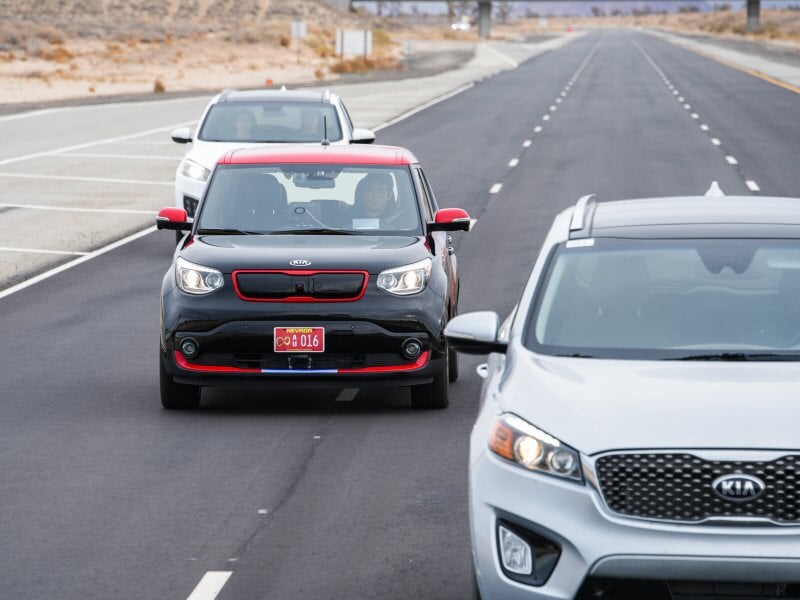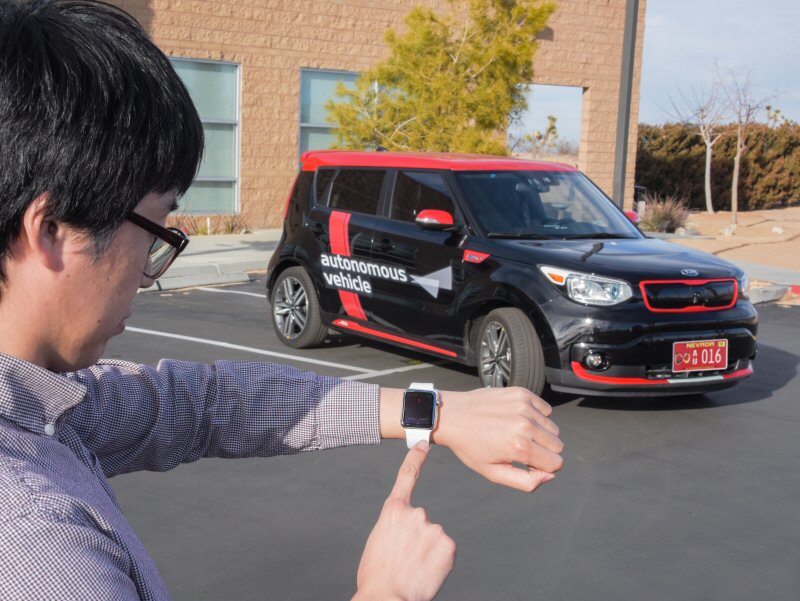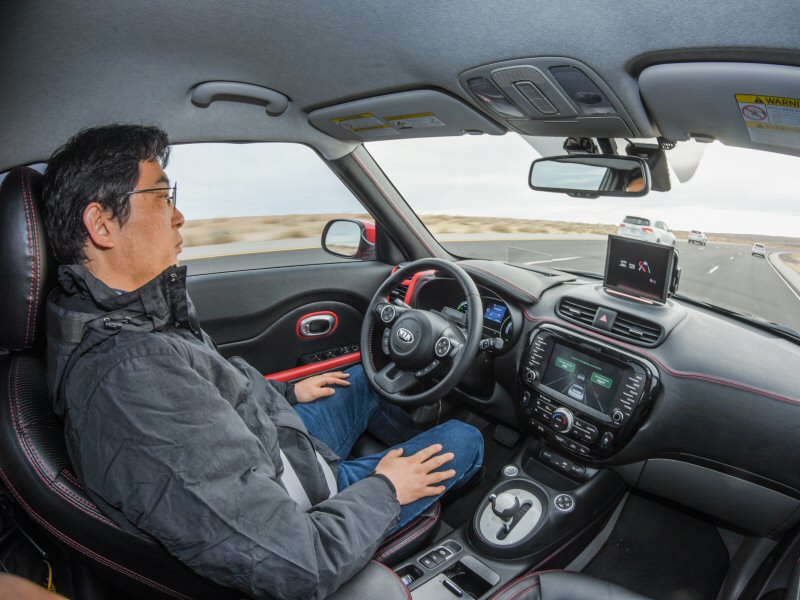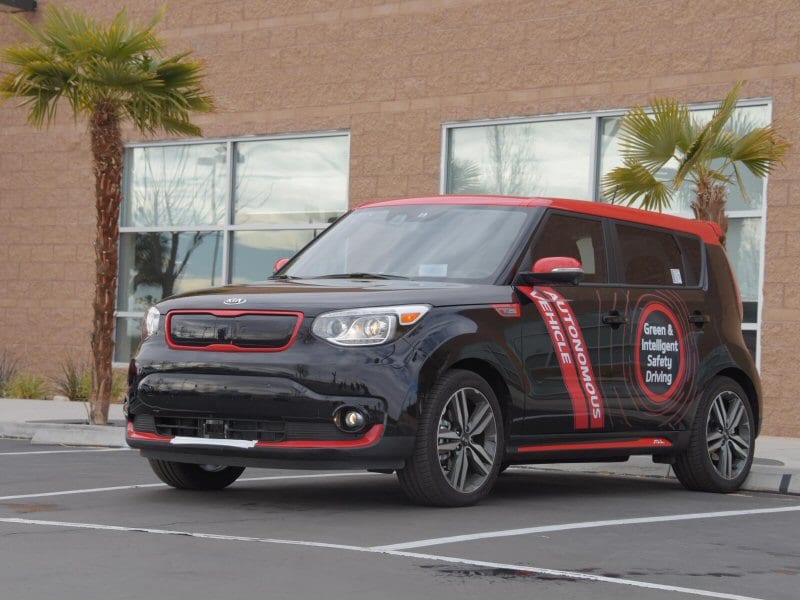Recent Articles
Popular Makes
Body Types
Autonomous Kia Soul EV First Ride and Review

Autonomous-Kia-Soul-EV-Highway-Formation-Traffic
Is there a less passionate slice of the automotive industry than autonomous driving? Once you've excised the human element from the equation, self-driving cars become an orgy of ones and zeros, a series of cold calculations focused on everything from parsing the millions of variables that make up modern highways to perhaps even deciding who lives, and who dies, in an accident. Fortunately for those of us who still care about actually driving cars, the engineers at Kia don't quite see it that way. To them, the future isn't filled with metal husks stuffed with detached consumers texting their way to work in the morning. Instead, it's a place where autonomous vehicles alleviate the drudgery of driving without erasing the opportunity to remain involved in the process. This was made clear during my time at Kia's California Providing Grounds facility, a sprawling playland tucked just across from Edwards Air Force Base in the Mojave desert. It was here that I was given a second opportunity to immerse myself in Kia's view of the autonomous future, riding shotgun through a comprehensive simulation of real-world driving conditions in a self-driving Kia Soul EV.
Autonomous* Driving
The Society of Automotive Engineers splits autonomous technology across six distinct strata, numbered from zero to five. At the very top of the list are cars that ask for no driver involvement whatsoever—so-called Level 5 autonomous vehicles—but while many in the industry have made these models their holy grail, Kia is far more interested in Level 3 and Level 4 designs. These are automobiles that offer comprehensive self-driving capability but still rely on flesh-and-blood decision-making in some aspects of their operation. Enter the autonomous Kia Soul EV. By implementing three distinct self-driving programs—Urban, Highway, and Valet—the Korean company's research and development team has given its electric crossover a comprehensive suite of advanced driving technologies that buttress, rather than exclude, owners from the driving process. It's a simple yet appealing approach that requires the Soul EV's occupants to initiate each autonomous program, which further translates into being directly involved in the transition from one state of driving to the next.

Command Performance
At the Proving Grounds, it all began when my assigned engineer used his smart watch to call over a parked autonomous Soul, which left its assigned spot and stationed itself in front of myself and two other journalists, ready to load out. Once inside, it was time to engage Urban mode, which would take us on a pre-programmed route through the joint Kia-Hyundai facility's extensive network of roadways. At the push of a touchscreen button, the Soul EV expertly pulled away from the curb, slowing to avoid a crossing pedestrian (a nice surprise from Kia's staging team) and giving everyone along for the ride a confidence boost in the vehicle's ability to deal with the unexpected. There really wasn't anything to worry about, of course, regarding either our safety or the skill of the vehicle controlling our fate. The Soul EV's robust sensor setup included 360 degrees of radar, lidar, and video camera coverage, coupled with the pairing of GPS and incredibly accurate mapping technologies in order to keep track of its position at all times as well as deal with any unexpected obstacles and, of course, the many other vehicles plying the Proving Grounds with us. After passing through a gauntlet of oncoming cars, stop signs, and traffic lights, we arrived at the entrance ramp to the 6.4-mile high-speed oval, where the car handed off merging duties to the engineer seated in the front left seat. The transition from Urban to Highway autonomous modes was accomplished as soon as the Soul EV attained the inside lane of the three-abreast loop, which was crowded with SUVs designed to simulate a long list of different traffic situations. Another touch panel push and the autonomous Kia was deftly negotiating stop-and-go traffic, providing us with passing prompts (drivers can select left- or right-side overtaking should the Soul EV detect slower-moving traffic ahead and clear lanes all around), and even responding to an emergency situation in which our Kia caretaker slumped over in his seat to simulate a heart attack or falling asleep at the wheel. The car slowed, deftly found the shoulder, and used its onboard communications system to summon assistance—whereupon another autonomous feature was activated to digitally tether our Soul with the ambulance so it could be "towed" off the road.

Still Waiting For Perfection
The autonomous Kia Soul EV that I rode in performed flawlessly during the 30-minute demonstration—an improvement from the less-than-smooth experience I had in the same car in Namyang, South Korea the previous fall—but it's important to recognize the carefully controlled circumstances that made it possible. Sunny desert weather is a far cry from howling winds, snow squalls, and ice and grime build-up that can render sensors and cameras ineffective, an issue that Kia's R&D executives candidly admit currently evades a solution. There's also the question of mapping: With GPS too imprecise to safely guide a self-driving automobile, the task of meticulously mapping every square inch of American roads and then making that accessible to autonomous vehicles is daunting at best. These challenges (not to mention the legal implications of an accident involving a self-driving car) are proof positive that an autonomous tomorrow is, in fact, not likely to appear for many years. Kia's approach, however, is one that intends to slowly introduce its advanced driving tech gradually, building on its existing adaptive cruise control and safety systems in order to acclimate drivers and comply with government regulations. That means the Soul EV won't be picking you up from the curb anytime soon (the company has optimistically bandied about 2030 as its date with Level 4 destiny), but the path from now to then is likely to be littered with advancements in attitude and execution towards autonomous vehicles. Kia's decision to make sure we drivers aren't left behind in the process is a refreshing outlook from a corner of the automotive world that is more often than not intoxicated with its technological toys rather than focused on asking us whether we want to play with them in the first place.
